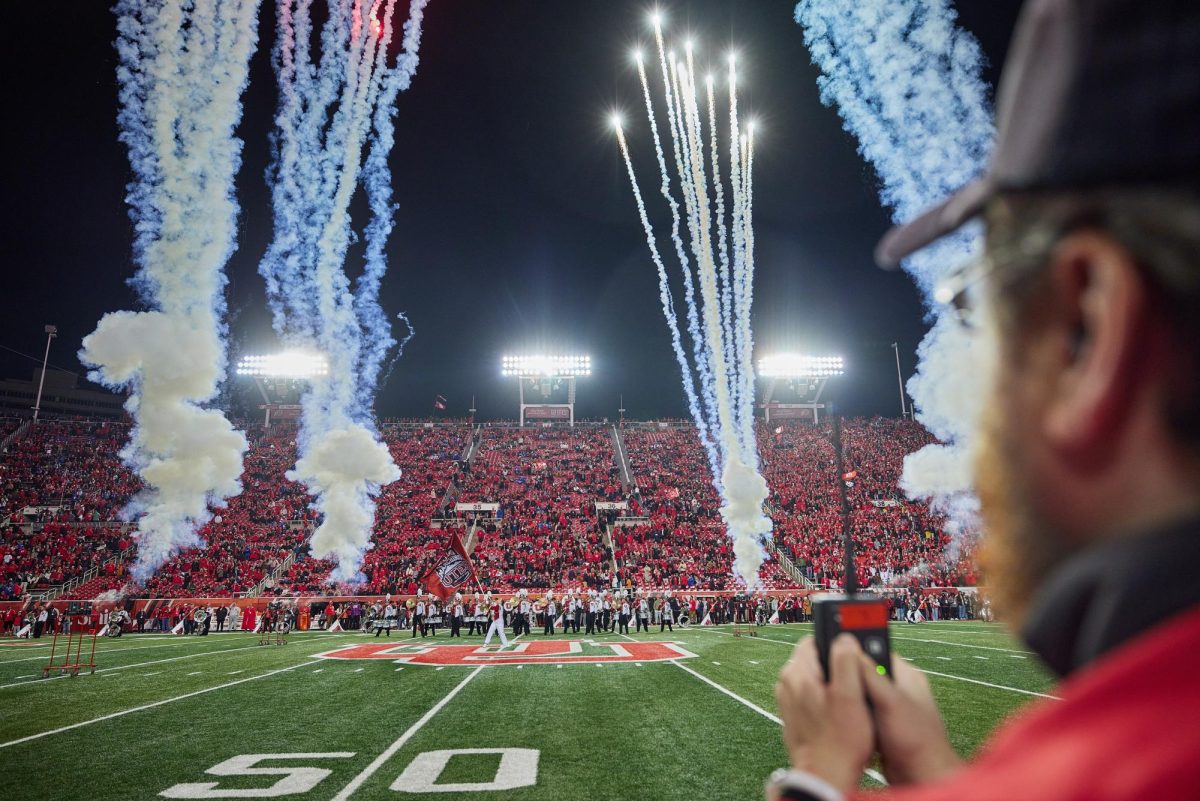Campus Safety Alerts and their Implications
UnSafe U protesters gather at the Public Safety Building on the University of Utah campus in Salt Lake City to protest the actions of officers involved in the Lauren McCluskey case on Aug. 6, 2020. (Chronicle archives)
October 27, 2020
Every day Grace Mason, like so many, checks their phone — the notifications, the news, the happenings of their friends — when they get the alert.
Mason, a health society and policy and gender studies student and survivor, said a dread goes through their body every time they get the notification.
On Oct. 17, the University of Utah campus community received a safety alert, notifying them a sexual assault was reported in the 400 block of Mario Capecchi Dr. An update was later sent out that the incident occurred on the Fort Douglas Military Reserve with more details expected to come on Oct. 26 at 3 p.m.
“The way they describe [the situation], it sounds so sterile. When it’s so easy to see myself in those shoes. And so it goes from this place of fear to creating, to almost like feeling myself in that situation. But then I also feel grief for the survivor in this experience because they’re having their experience broadcast out,” Mason said.
Mason said while there needs to be more reporting, they also feel like the U’s language in the alerts takes away from the survivor’s experience.
“The university takes away that moment that is so impactful on someone’s life and kind of turns it [into] a marketing piece of like, ‘we’re doing well because I’m showing you this [alert],’” Mason said.
The language utilized in the alerts is intentional, according to Aerin Washington, the director of campus security and compliance at the U. Washington said there are certain language requirements they have to include in the alerts to comply with the Clery Act.
Prior to the Clery Act, there was no mandatory release of information about crimes that occurred on college campuses.
The necessary components of an alert are a description of the crime, approximate location, a description of the person of interest and protective measures.
“So one of the goals of timely warning is to really empower the campus community… to make sure that they are able to take those measures necessary to keep themselves safe until that situation has been mitigated,” Washington said.
For those who voluntarily signed up for campus alerts through text, the message included a link to active alerts where more information is updated as it gets discovered.
On the page, there are also numerous links and phone numbers to resources on campus that specialize in counseling and support for sexual assault victims and survivors.
One of those resources is the Center for Student Wellness, where Ellie Goldberg, a victim-survivor advocate, said she was glad to see a language change in this alert compared to those that have been sent out in the past.
“I was happy to see that the language changed a little bit to put first and foremost that sexual assault is never the survivor’s fault. I also was impressed to see that they included a diverse array of resources for different identities and communities,” Goldberg said.
Annalisa Purser, the director of administration for the Office of the Chief Safety Officer, said the Department of Public Safety has been working closely with other campus departments such as gender studies, social work, and social and behavioral sciences to edit the language of the alerts.
“We worked with staff across campus. Students, faculty who have expertise in interpersonal violence, who study that topic from different aspects and different angles. And we share this information with them and ask for their feedback and suggestions on the best way to provide this information,” Purser said.
Mason said the backside of the U sending out those alerts is once it does, the university doesn’t deal with emotional aftermath for survivors who can be potentially triggered by the alerts.
“The U gets the applause for sending the alert and letting people know, but [they] don’t deal with the repercussions of the panic, the fear, the grief, that that sends to students, especially survivors. And the university doesn’t seem to dive deeply into advocating for justice on behalf of its students after these alerts go out,” Mason said.
Goldberg said these alerts can have negative implications for survivors of sexual assault, secondary survivors and the community at large.
“You know, bringing up issues of sexual assault is always can always be jarring and shocking for folks just by its nature; it’s a very difficult, challenging, traumatic thing to think about,” Goldberg said.
Goldberg mentioned the physiological responses can occur when a survivor is unexpectedly reminded of sexual assault.
“When somebody is reminded of the idea of sexual assault, their own experience, the memories, the perceived idea of safety and security in their own bodies and in the space and the community that they live in, can be triggered by the thought of this happening in our community,” Goldberg said.
At the Center for Student Wellness, Goldberg said she sees an increase in students reaching out for help after an alert gets sent out.
“Soon after, we have a lot of people reaching out to us through our website, and through our advocate email address; they’ll put ‘I saw this warning, the information about your services was included, and so I’m reaching out because I am a survivor myself,’” Goldberg said.
Washington also said she is always concerned with the potential triggering nature of an alert, but there is a balance that must be struck between supporting survivors and keeping the campus community safe.
“There comes a point where we have to balance the impact that it’s going to have on the victim … with what we set out against the safety and security needs of the campus as a whole. And so we are super intentional about trying to make sure that we’re including as little information about the victim as possible,” Washington said.
Although the Office of the Chief Safety Officer does not have control over how long it takes the victim to report an incident, Washington strives to send the campus safety alert out within two hours of receiving the report.
Washington said although other universities use different methods of alerting students, she believes the U’s system to be best practice.
i.martinez@dailyutahchronicle.com
k.sliverstein@dailyutahchronicle.com
This article has been corrected to reflect that the Office of the Chief Safety Officer did not work closely with the department of gender studies, or social work to edit the language of the alerts, as previously listed.
A second correction now states that the Office of the Chief Safety Officer does not have control over victim reporting, rather than the Department of Public Safety.














Alyssa Thorman • Oct 30, 2020 at 1:27 pm
The campus alert system is borderline useless. How long from the report of an incidence to the time the alert goes out? With Lauren McCluskey it was on the span of hours after the perpetrator had already fled. There had been reports of gunshots but they waited to issue any alert leaving students out and about while an armed assailant was on campus. I fail to see how the current system is timely or helpful.